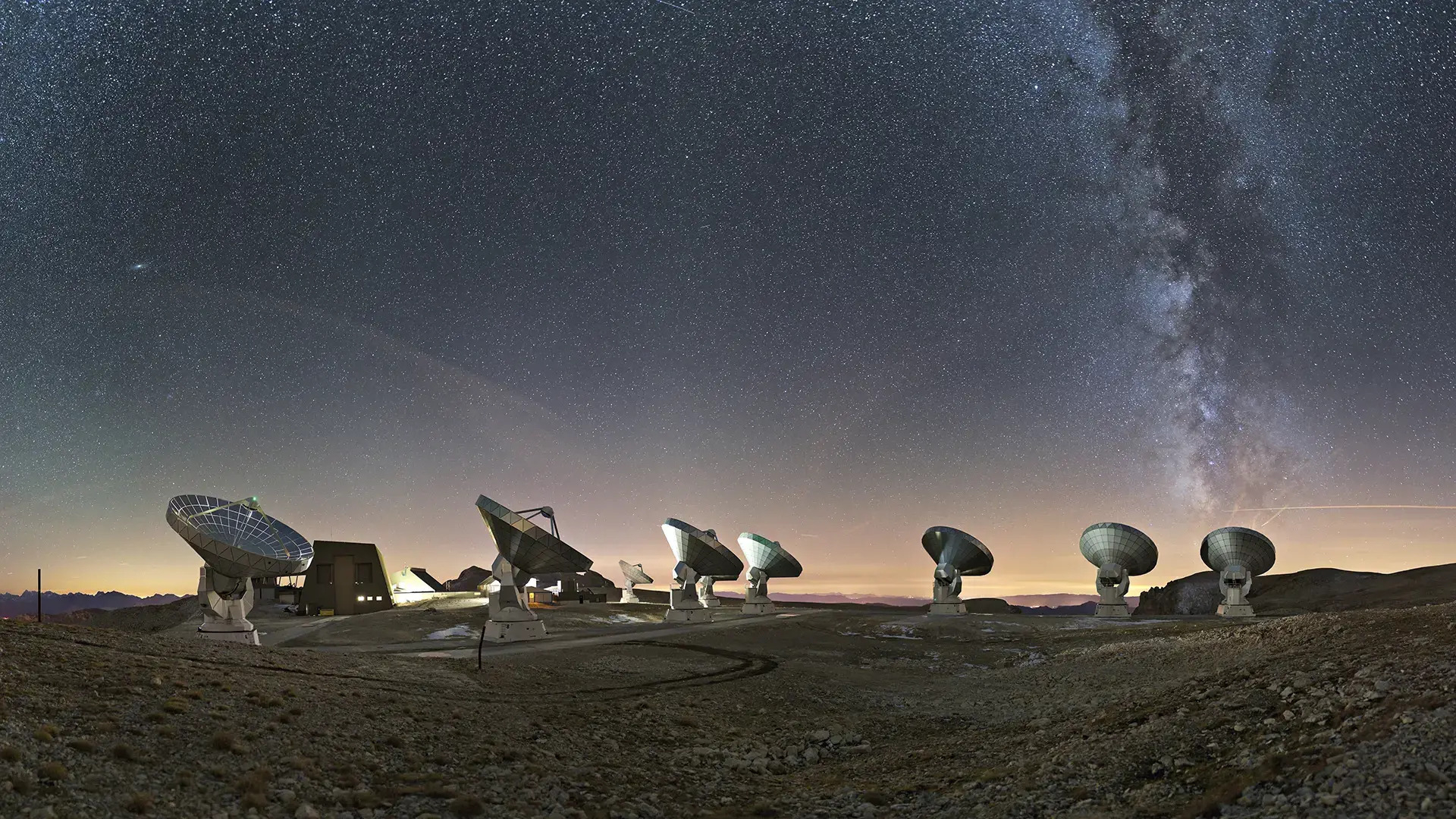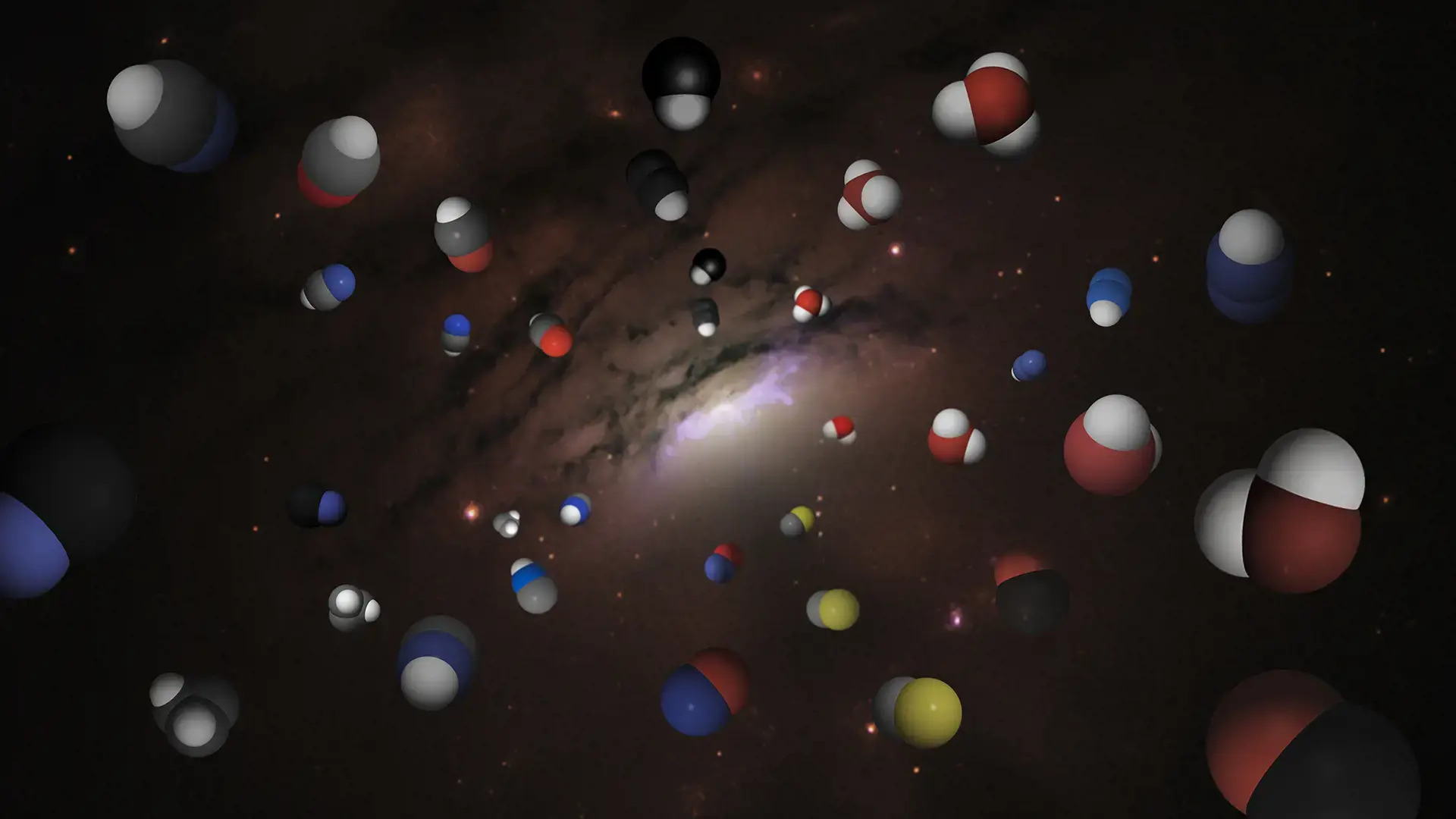Scientists find record-breaking collection of molecules in 2 extremely ancient galaxies
13 molecules, including some never spotted before in the early universe, tell a tale of massive-star formation.

A treasure trove of molecules has turned up in two galaxies that we see as they were over 12 billion years ago, revealing information about how the ancient realms form stars.
One of the distant galaxies, APM 08279+5255, is home to a quasar — an active supermassive black hole at its core swallowing huge amounts of gas — while the other galaxy, NCv1.143, is a more "normal" galaxy. Both, however, are seen to be forming stars at a ferocious rate, hundreds of times more stars than the Milky Way galaxy is currently generating.
The two galaxies were targeted by astronomers using NOEMA, the Northern Extended Millimetre Array, in France. NOEMA is able to detect millimeter and submillimeter radio waves. Fascinatingly, the team, led by Chentao Yang of the Chalmers University of Technology in Sweden, detected emissions from a whopping 13 different molecules in these two galaxies.
Related: Earliest magnetic galaxy ever detected offers clues about Milky Way history
"We are seeing part of the electromagnetic spectrum that is hard to observe in nearby galaxies," said Yang in a press statement. "But thanks to the expansion of the universe, the light from distant galaxies like these is shifted to longer wavelengths that we can see with radio telescopes observing [at] submillimeter [wavelengths]."
The discovery forms the largest collection of molecules ever detected in galaxies at such extreme distances (the galaxies are now about 20 billion light-years away, and getting further due to cosmic expansion).
Among the 13 different types of molecules detected are carbon monoxide, carbon monosulfide, the cyano radical (a radical is a molecule with an unpaired electron in the outer shell of one of its constituent atoms), the formyl cation (a cation is positively charged ion), hydrogen cyanide, hydrogen isocyanide, nitric oxide and water. Yang's team also detected five molecules that haven't been seen before in the early universe: Cyclopropenylidene (a highly reactive organic molecule also found on Saturn's moon Titan), diazenylium (formed of molecular nitrogen and a hydrogen ion), radicals of the organic molecule ethynyl, hydronium ions (formed from a water molecule and a hydrogen ion) and radicals of methylidyne (a highly reactive organic molecule).
Breaking space news, the latest updates on rocket launches, skywatching events and more!
All of these molecules are commonly found in interstellar gas in our Milky Way galaxy, and each provides clues about the environment in which they are found in — an environment we see forming lots of stars.
"We knew these galaxies were prodigious star factories, perhaps among the biggest the universe has ever seen," said Yang.
The team also found that the quasar in APM 08279+5255, contains more excited molecular gas with higher temperatures and densities than the entirety of NCv1.143, a consequence perhaps of the activity around the quasar's black hole. Its molecular abundances are similar to galaxies with active black holes in the more modern universe. Similarly, NCv1.143's molecular inventory is akin to local starburst galaxies, which are simply galaxies birthing lots of stars, such as the Cigar Galaxy (Messier 82) in the constellation of Ursa Major, the Great Bear. It seems that the chemistry of these types of galaxies was already in place 12 billion years ago.
But not everything is the same. The strength of emissions from some of the molecules, such as carbon dioxide, coupled with extreme conditions in the two galaxies' star-forming gas, suggests what is called a "top-heavy initial mass function." The initial mass function, or IMF, describes how many stars of a given mass are able to form, with low-mass stars being much more common than high-mass stars. A top-heavy IMF would imply that more massive stars were able to form in the early universe than can form today. This might not only explain why galaxies in the early universe that are being detected by the James Webb Space Telescope are more luminous than expected — they contain more massive, brighter stars — but also suggest the presence of more massive stars that explode as supernovas will accelerate the development of chemistry in these galaxies, distributing heavy elements across space.
"The most remarkable galaxies in the early universe are finally able to tell their stories through their molecules," said co-author Pierre Cox, of Sorbonne Université in France.
The findings were published on December 14th in the journal Astronomy and Astrophysics.

Keith Cooper is a freelance science journalist and editor in the United Kingdom, and has a degree in physics and astrophysics from the University of Manchester. He's the author of "The Contact Paradox: Challenging Our Assumptions in the Search for Extraterrestrial Intelligence" (Bloomsbury Sigma, 2020) and has written articles on astronomy, space, physics and astrobiology for a multitude of magazines and websites.

